The Pros and Cons of Rubber Flooring
25 Aug, 2024
- What is rubber flooring?
- Where can rubber flooring be used?
- Rubber Flooring Types
- Pros and Cons of Rubber Flooring
- Disadvantages of rubber flooring
- Best Conditions for Rubber Flooring Installation
- What Makes Rubber Flooring a Unique Flooring Solution?
- Is Rubber Flooring Suitable for Home Use?
- Maintenance of Rubber Flooring
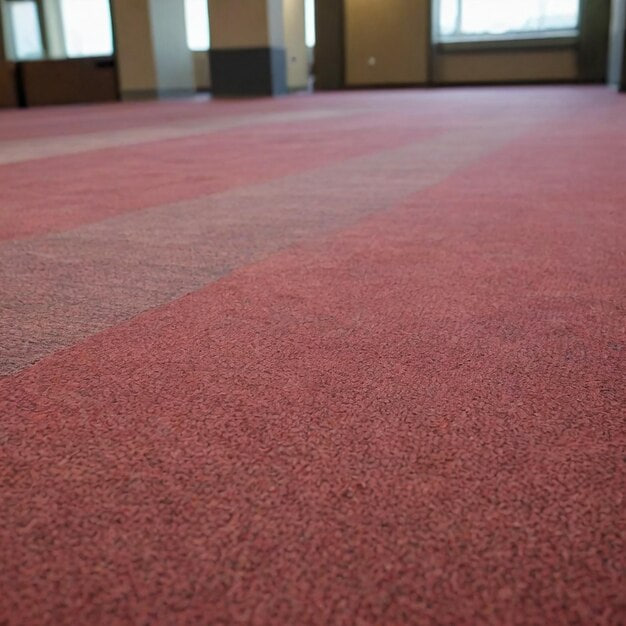
Rubber flooring has been one of the most common choices in residential and commercial properties alike. No wonder – it is easy to install and maintain, durable, and comfortable; what’s not to like?
Still, at Safestep, we believe in making informed, data-driven decisions when preparing your flooring project, which is why we have prepared this article.
What is rubber flooring? Where can I use it? What types are there? What are the benefits of rubber flooring? Let’s find out and parse all the rubber flooring pros and cons together.
What is rubber flooring?
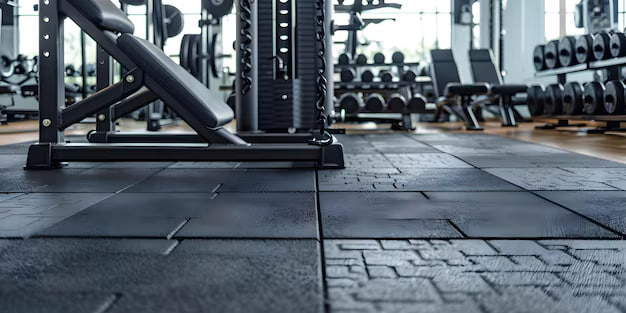
Where can rubber flooring be used?
Rubber flooring is extremely versatile, making it an ideal choice for various spaces, including:
- Gyms: Provides cushioning and shock absorption, ideal for high-impact activities.
- commercial gyms and sports facilities: Known for handling high foot traffic and heavy equipment.
- sidewalks: As shown in this rubber sidewalks option, it provides flexibility and durability in outdoor settings.
- rubber crumb driveways: These rubber crumb driveways offer a robust and environmentally friendly driveway solution.
- Playgrounds: Poured-in-place rubber playground surfaces are perfect for creating a safe, durable area for kids to play.
Pool Decks: The rubber pool deck provides a safe, slip-resistant surface for wet areas like pools.
Rubber Flooring Types
Now that we have figured out the main applications of rubber flooring let’s take a look at its types. Different shapes and formats have different properties, fitting various needs.
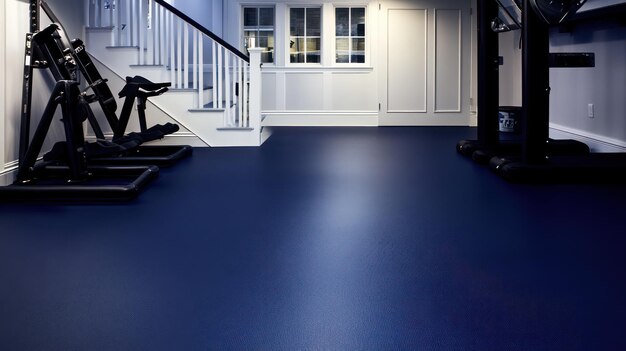
Rubber floor tiles
Rubber floor tiles come in the form of individual squares that are interlocking. This flooring type is amazing for small spaces and larger areas where precise cutting around edges is required. Also, the tiles are easy to install and replace, making them one of the most common choices in virtually any facility.
Rubber floor mats
If you are building a home gym or have temporary flooring needs, rubber mats can be a viable portable flooring solution. They are easy just to roll out and remove, making them ideal if you prioritize flexibility.
Rubber floor rolls
Rubber floor rolls offer the most seamless coverage out of all the other flooring types. While installation, they leave minimal seams, which significantly reduces the risk of water damage over time. These are typically made for larger areas like commercial gyms or other sports facilities.
Pros and Cons of Rubber Flooring
Although various types of rubber flooring come with their own benefits and drawbacks, there are features that all of them share.
Advantages of rubber flooring
Due to its unique properties, rubber flooring has become one of the most common choices in the last decades. Let’s see why exactly.
Durable
Rubber is typically chosen for its superb durability. Besides resisting tears from heavy foot traffic, they can also endure heavy weights and even machinery without any signs of wear. If you are looking for sturdy flooring for a high-traffic area like gym flooring or driveway, rubber is just the right choice.
Slip-resistant
Another one of the main rubber flooring advantages of rubber is its safety. The material is naturally slip-resistant, offering excellent traction even when wet. This is one of the main reasons rubber is so popular for pool decks and playgrounds.
Comfort and cushioning
Rubber’s inherent flexibility makes it comfortable underfoot. The cushioning and shock absorption properties help reduce fatigue and joint strain, especially in areas where people are on their feet for extended durations, like runways.
Sound-absorbing qualities
Unlike materials like wood or certain tiles, rubber emits no sound when walked on. Additionally, the sound absorption of rubber makes it ideal for spaces where things get dropped a lot, like playrooms or multi-purpose rooms.
Resilient
Rubber is one of the most adaptable flooring options, meaning it won’t deform even after being compressed by heavy loads.
Low-maintenance
Regular sweeping and occasional mopping are all the upkeep that rubber needs. Being low-maintenance, it allows you to save considerable amounts of money in the long run.
Frost-resistant
Unlike many other flooring solutions, rubber can withstand extremely low temperatures without cracking. If you are living in an area with regular colds, consider going for rubber for your driveway and external floorings.
Sustainable
Most rubber is made from either recycled materials or natural caoutchouc, meaning that it is highly sustainable. Not to mention that a lot of rubber flooring is manufactured from recycled tires, making them an environmentally responsible choice.
Easy to install
Another reason why many people choose rubber is that rubber flooring is easy to install, especially with interlocking rubber rolls or tiles. If you are a DIY homeowner, rubber is there for you.
Economical
Although rubber might seem more costly upfront, it is a cost-effective solution in the long run. Low maintenance and high durability mean that rubber flooring can last for years, requiring little to no extra expenses.
Eco-friendly
Rubber flooring made from recycled materials contributes to less waste in landfills and reduces the need for virgin rubber production.
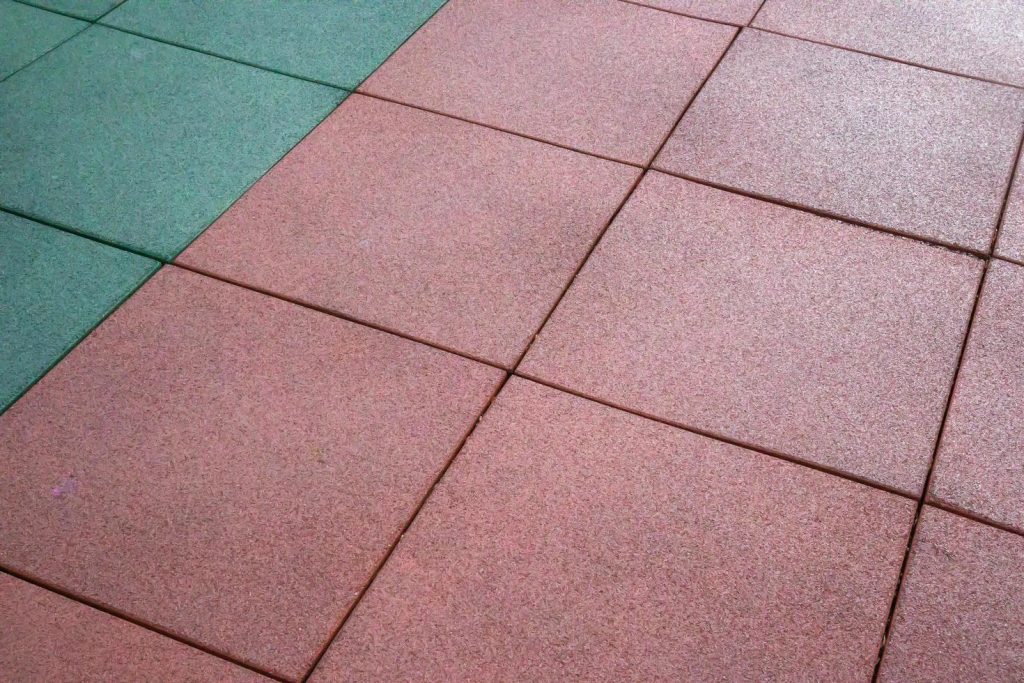
Disadvantages of rubber flooring
Although rubber may seem as close to perfect as it gets, it doesn’t come without disadvantages you need to consider.
Initial cost
One of the major disadvantages of rubber flooring is the upfront cost. Although the material is cost-effective in the long run, getting high-quality rubber flooring products (especially virgin rubber) can be considerably more expensive than other materials.
Odor concerns
Rubber floors tend to emit a noticeable odor, especially the first time after the installation. Still, the smell typically dissipates over time, but before that, it can be a concern for people sensitive to strong scents.
Potential for fading
If installed outdoors, rubber may fade over time if exposed to direct sunlight. Although the process doesn’t affect its physical properties, rubber flooring should be properly treated or covered to avoid fading.
Best Conditions for Rubber Flooring Installation
Rubber flooring performs best when installed over specific types of subfloors to guarantee its durability and comfort.
Hardwood flooring
Hardwood flooring can be an excellent base for rubber owing to its sturdiness. However, we recommend placing a protective barrier between the two to prevent moisture from damaging the wood.
Flat concrete
Flat concrete is the best base for rubber flooring. Whether you are planning to lay it in a garage or basement, concrete and rubber work together perfectly, creating a surface that can defy extremely heavy use.
Ceramic tile
While installing rubber over ceramic tile is possible, it’s essential to ensure that the tiles are even and that any grout lines are filled in to prevent seams or dips in the flooring.
What Makes Rubber Flooring a Unique Flooring Solution?
With all of rubber flooring’s pros and cons, few other materials can match its uniqueness. Because of its shock-absorbing qualities, it’s perfect for high-impact settings like gyms, and its non-slip surface adds extra safety in damp areas like pool decks. Rubber flooring comes in a variety of hues, designs, and textures, so it can be tailored to match a variety of aesthetic preferences. It also has a reputation for being able to absorb sound, which makes it perfect for reducing noise in crowded places. Rubber flooring, when made from recycled materials, offers an eco-friendly and long-lasting solution for both indoor and outdoor use. It also assures comfort underfoot.
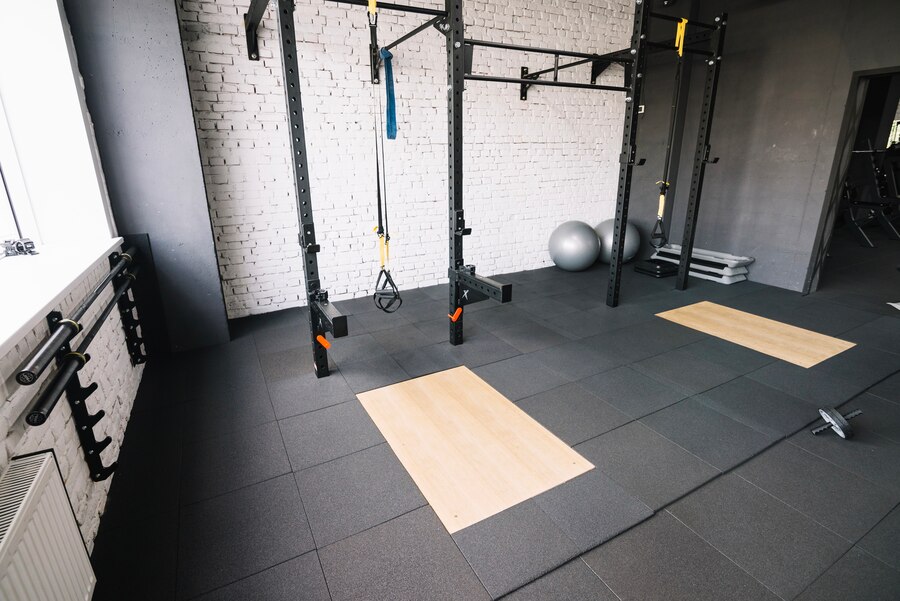
Is Rubber Flooring Suitable for Home Use?
All the aforementioned benefits of rubber flooring make it a great option for use at home, especially in playrooms, basements, and gyms. It is comfortable to walk and stand on thanks to its cushioning and shock absorption, which lessens the strain on joints during exercise. Rubber flooring is perfect for areas that are frequently used because it is also low-maintenance, requiring only routine mopping or broom cleaning. Its non-slip qualities make it an excellent choice for outdoor areas like patios and rubber pool decks, where they help prevent mishaps. Rubber flooring is more expensive initially than other materials, but because of its durability and performance, homeowners can afford to invest in it.
Maintenance of Rubber Flooring
Rubber flooring is easy to maintain and doesn’t take much work. Frequent vacuuming or sweeping will keep the surface clear of dirt and debris, and mild detergent mopping will preserve the surface’s appearance.
Rubber’s stain-resistant surface helps it look new and longer, and its spill-resistant qualities make spills easy to clean up. Applying a rubber floor finish and sealer can extend its lifetime and provide additional protection, particularly in high-traffic areas. Furthermore, rubber flooring is naturally moisture-resistant, protecting the subfloor underneath from deterioration.
All things considered, rubber flooring is a low-maintenance option that provides long-term durability and aesthetic appeal.
